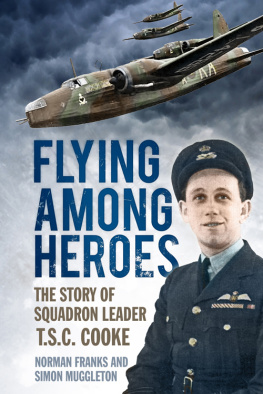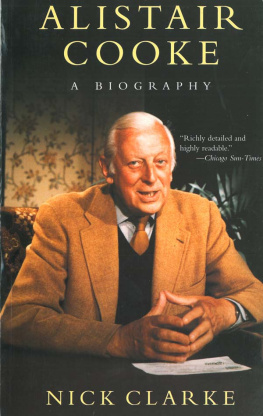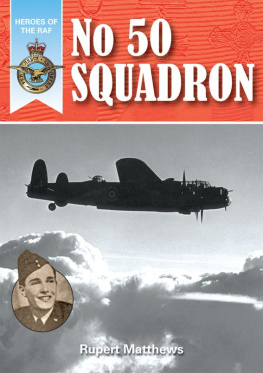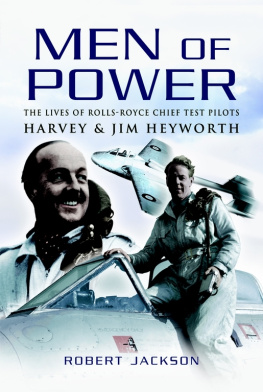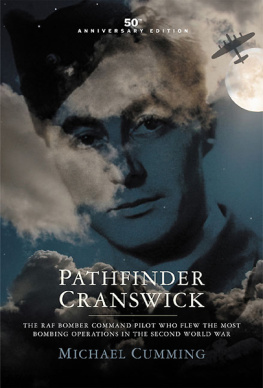
To all the 55,573 airmen lost in the Second World War
The authors approached Mr Doug Radcliffe MBE, Secretary of the Bomber Command Association, with a request that a veteran of the association, who had taken part in raids over Europe during the Second World War, write a foreword for this book. Mr Radcliffe, without hesitation, suggested Harry Irons for this task.
Like so many others of his generation he answered the call to arms in 1941 and volunteered to join the Royal Air Force, eventually becoming a sergeant air gunner. During his time, he flew over sixty operations with 9, 77 and 158 Squadrons. He was promoted to warrant officer and awarded the Distinguished Flying Cross in 1945. He currently lives in Essex. The authors are grateful for his sincere thoughts and recollections made in this foreword.
The authors are also grateful to both the Bomber Command Association and the artist Philip Jackson CVO for the use of the images used on the back cover of this book. Philip Jackson was commissioned to sculpture seven larger than lifesize figures representing various air crew, to be placed in the Bomber Command Memorial in London. The four images depicted on the cover are: navigator, wireless operator, mid-upper gunner and rear gunner.
Philip Jackson was born in Inverness, Scotland, in 1944, and lives and works in West Sussex. He was elected a Fellow of the Royal Society of British Sculptors in 1989 and has since then undertaken a variety of public commissions which include HM Queen Elizabeth (the Queen Mother) in the Mall, London; the Falklands War Sculpture in Portsmouth; and the 1966 World Cup Sculpture at Newham. He was made a Companion of the Victorian Order (CVO) in the Birthday Honours List in 2009.
CONTENTS
by Warrant Officer Harry Irons DFC RAFVR
Appendix A
Appendix B
BY WARRANT OFFICER HARRY IRONS DFC RAFVR
At the cessation of hostilities in 1945, and while awaiting demobilisation, the relieved surviving air crews of Bomber Command were aware of the past years, their squadron, the stations, runways, flare paths, but most of all, the comrades they had left behind who had lost their lives.
Most of us had no knowledge of the actual 55,573 lost in the conflict until much later. In the aftermath of the Second World War the press started to disclose other figures that had been kept secret from the public during the war. We were told of the Holocaust and shown graphic pictures, the bleak Russian campaign, the treatment of prisoners of war in the Far East, the forced marches: victory came at a cost.
We awaited the Victory Parade with pride, but we were dismayed at the contents of the prime ministers victory speech. There was no mention made to the nation and the Commonwealth of Bomber Commands contribution to victory. No individual campaign medal for the air crews or ground crew to those fortunate enough to have volunteered and survived. High-level protests made no difference, Bomber Command veterans were just left with the words Dresden ringing in our ears.
How about our comrades who had gone before?
The blue priority telegram or a letter from a sympathetic CO or overworked adjutant was the only thing a grieving family had for the loss of a son, husband or brother. It took many years before the Air Ministry, the Commonwealth War Graves Commission and the Red Cross were able to provide some small amounts of information to the bereaved.
Some 20,000 airmen from the Commonwealth and parts of occupied Europe who flew with the RAF and had no known grave were later to be recorded on the tablets of a memorial at Runnymede, close to Windsor.
Over the past sixty years, several attempts have been made to the various authorities to amend the decision not to grant air crew and ground crews of the RAF a campaign medal; one such application even reached the House of Commons, but to no avail.
Some of the air crews who flew after D-Day (6 June 1944) were granted the France and Germany Star, but it had no association with flying; indeed, it was given to members of all the armed forces and the Merchant Service who took part in that campaign.
Prior to D-Day, air crew received the Air Crew Europe Star if they fulfilled the necessary conditions, but this was not given exclusively to Bomber Command members.
Serving on the committee of the Bomber Command Association, I became aware of a growing demand from the membership to raise funds for a fitting memorial to commemorate those 55,573 young men who freely volunteered to fly against the Nazi onslaught and were sadly killed in action.
The Heritage Foundation, chaired by Mr David Graham along with their president, Mr Robin Gibb CBE of the Bee Gees, shared these same thoughts, and initiated a fundraising project in 2008, backed by the Daily Telegraph newspaper. The public reacted overnight, and funds came rolling in over the following years, mostly from bereaved relatives. The queens sculptor, Philip Jackson CVO, was commissioned to mould seven larger than lifesize figures in bronze representing the various trades of air crew, which were to be placed in the centre of the memorial. This memorial will now finally be unveiled on 28 June 2012 in Green Park, Piccadilly, London.
When Doug Radcliffe MBE, the secretary of the Bomber Command Association, approached me to write this foreword I said, Why me? He replied, Read the title Harry, get airborne again.
After sitting in the rear turret as an air gunner for many hours during the two tours of operations I completed over Germany, France and Italy, being on the top deck of a London bus is high enough for me these days.
However, I took note of the title and received my copy from Doug Radcliffe, who had virtually read it overnight and commented to me what a good read it was. It took me a whole week, for I didnt just read it, I made a complete study of it. With my flying log book by my side, I compared my trips against those of Squadron Leader Tom Cooke and his crew, and wonder how they survived. I am sure many other air crew of the Second World War, students and authors will also do the same.
Over the years following the Second World War, veterans of Bomber Command have tried to move away from the word hero what on earth does it mean anyway? Surely Tom Cooke and his navigator Reg Lewis would shy away from the dictionary explanation: a man of distinguished valour or performance. Man can do heroic things, but it leaves him short of being a hero.
Reg Lewis was a very good friend of mine; we were near neighbours and worked together over many years with the Bomber Command Association. Reading this book about his wartime pilot, I found out many things that Reg had never mentioned to me about his time in the RAF. I am sure he would have laughed at the mention of the word hero, but to me he was a hero.
Heroes maybe its not me, but others. This book really pulls out the difference; it enabled me to compare many of the sixty operations shown in my log book with those experienced by Tom Cooke and his crew. Could it be that when Squadron Leader Cooke was over the Ruhr at the controls of his Stirling, I was sitting in the rear turret of my Lancaster some 5,000ft higher looking at the same target? Glancing through the entries in my log book for 1942 and 1943, they certainly match, and Im sure other veterans reading this book will do the same. Tom Cookes recollections of his ops are so clear and vivid, with them being well explained in the text.
Training in the RAF was a time to remember; the book boldly points out that air crew, having received the protective rank of sergeant along with the elusive but very proud brevet worn on the uniform, were often at variance with the long-serving sergeants. We were derisively called overnight NCOs, little thought being given that we could also disappear overnight.
Next page
